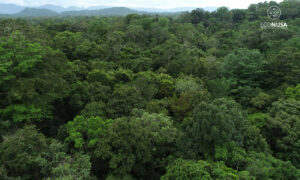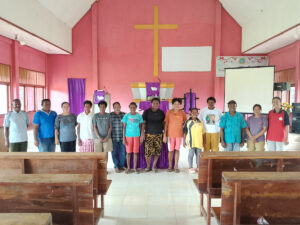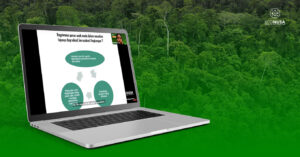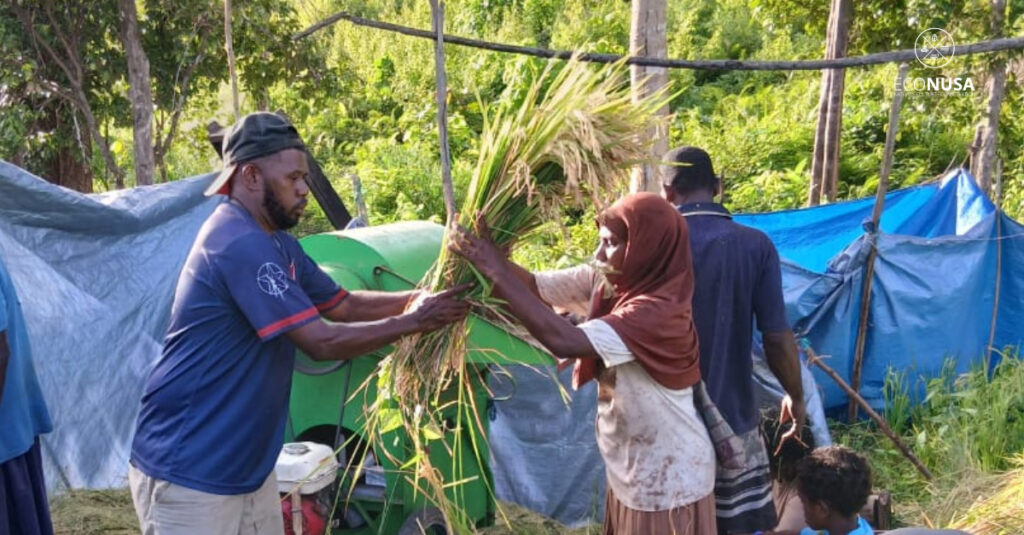
In the middle of the hills of Nagura Village, Kaimana, the community gathered to harvest their first upland rice. An atmosphere of strong enthusiasm and togetherness filled the field. Some residents cut the rice stalks with sickles, while others threshed the grain using a simple thresher machine. Laughter, shouts of encouragement, and the roar of the machine blended with the aroma of fresh straw that filled the air.
The community began planting upland rice in May 2025, with assistance from EcoNusa Foundation. Harvesting started in September and continued until early October. From a plot of over 3 hectares, they yielded 3,245 kilograms of unhusked rice, which, when milled, produced approximately 2,569 kilograms of rice. Most of the harvest will be used for family consumption, while the remaining 150 kilograms is being prepared as seeds for the next planting season. “We have already enjoyed the results,” said Suharudin Reasa, Chairman of the Nagura Village Rice Farmers Group.
Read Also: Strengthening Food Security Through Organic Rice in Nagura Village
This inaugural harvest marks an important milestone in the community’s efforts to develop independent farming and strengthen local food security. This success not only demonstrates their ability to manage the land productively and sustainably, but also symbolizes the return of the farming spirit despite limited access and infrastructure.
The Initial Step: Assessment and Training
EcoNusa’s assistance began with an initial assessment to understand the social and agricultural conditions of the Nagura community. Dialogues were held directly with residents, listening to their hopes, and tracing back the rice planting habits that had long been abandoned. This process revealed that the community had previously grown rice, but the practice stopped due to various factors. An agreement was reached: the community, with the assistance of the EcoNusa team, would try planting again, using a more focused approach based on capacity building.
The first step was training in making organic fertilizer. This was considered vital because fertilization is a key factor in land productivity. The community was taught to use local materials such as legumes, straw, and household organic waste to create fertilizer that is inexpensive, healthy for the soil, and environmentally friendly. After the training, the community worked together to clear the land and prepare for planting.
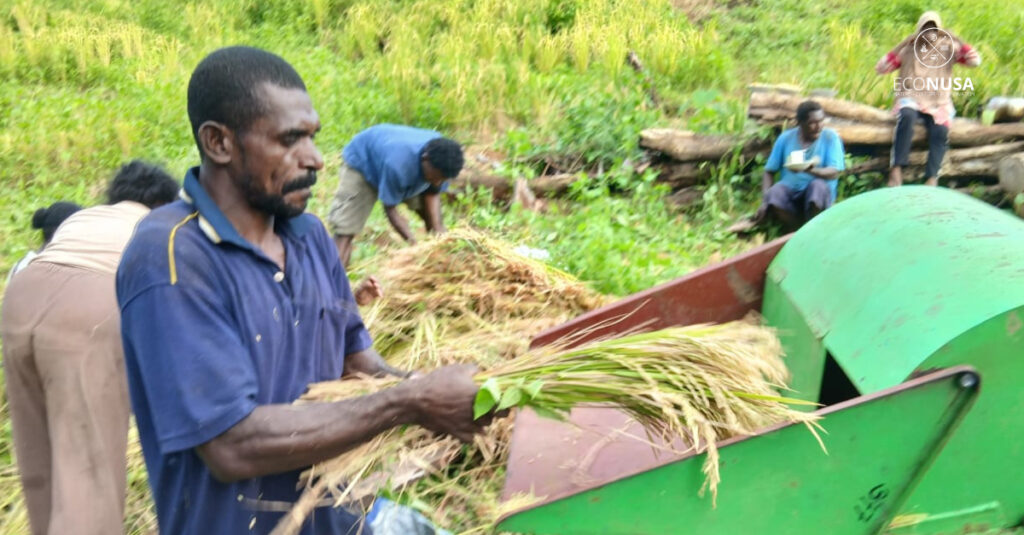
Challenges in the Field: From Pests to Mindsets
The process from planting to harvest was certainly not without challenges. Pests, changing weather, and limited equipment were technical obstacles that had to be faced. However, the biggest challenge actually arose in the form of a change in mindset. Some community members felt that buying rice from outside was more practical than growing it themselves. Furthermore, socio-cultural events, such as celebrations, funerals, and religious holidays, often disrupted the continuity of group activities.
Read Also: Upland Rice for Food Security in Nagura Village
As facilitators, we also faced the challenge of establishing ethical communication that respects local values. Every message had to be conveyed with great care to be accepted without causing offense. Facilitation is not just about transferring technical knowledge, but also about building trust and respecting the existing social context.
Harvest Evaluation: Opportunities to Learn and Grow
Although the first harvest brought pride and a new spirit, an evaluation was still conducted with the community. In terms of productivity, this harvest yield is still far from the ideal potential. The average production per hectare was only about 1.2 tons, whereas upland rice generally yields 5–6 tons per hectare. Some causes identified include too many seeds in one planting hole, stem borer pest attacks, and wild boar disturbances.
Read Also: Building Indigenous Community Resilience Through Taro Commodity
However, these shortcomings provided valuable learning experiences for both the community and the facilitators. Going forward, planting techniques will be improved, pest management enhanced, and role distribution within the group will be organized more effectively. This assistance is not merely about producing rice, but also about generating a new awareness of the importance of food self-sufficiency, mutual cooperation (gotong royong), and the ability to continuously learnfrom every experience.
Building Trust
The first harvest in Nagura Village is more than just a technical agricultural success. It is the result of a long process of building trust, collective spirit, and commitment to return to independent farming. For us, this assistance is not just about a work program, but a valuable experience that teaches that true change starts with small things done together, with patience and mutual respect.
The true success is not measured solely by the amount of rice produced, but by the growth of awareness and self-confidence within the community in managing the resources they possess, for a more sovereign and sustainable future.


